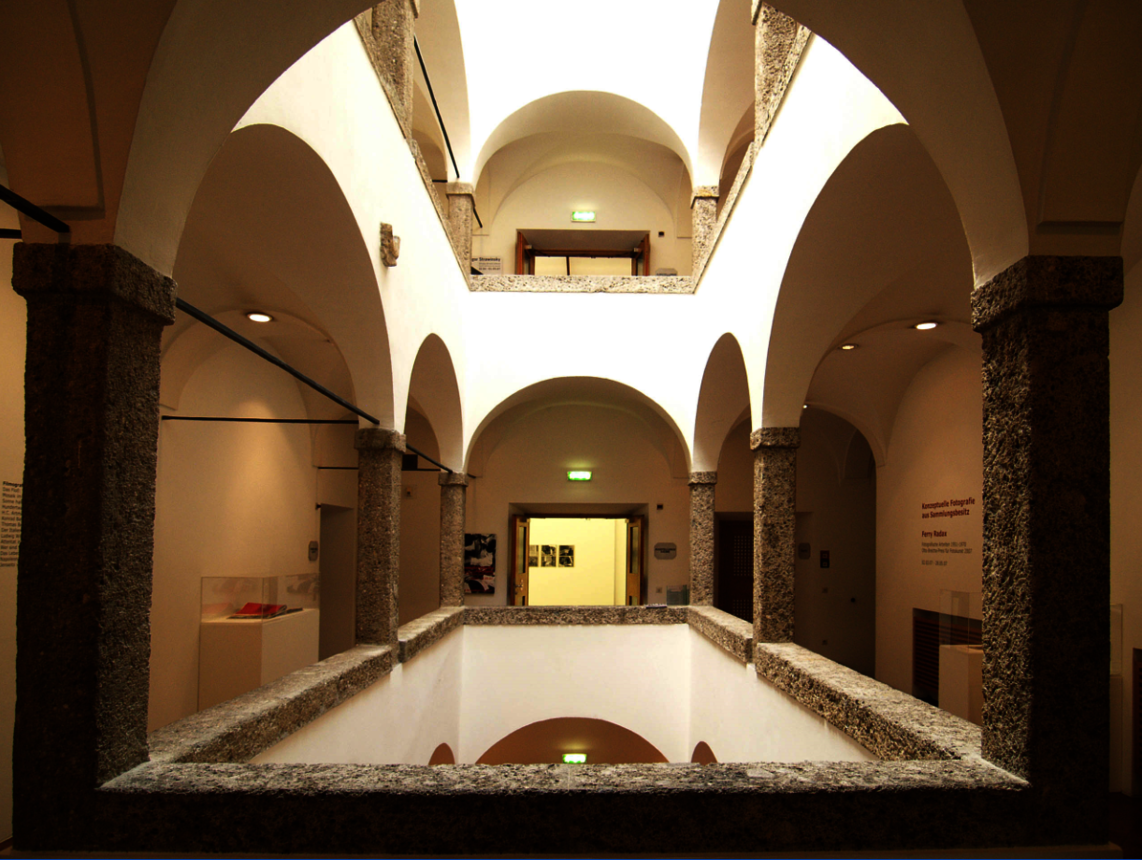Altstadt (Rupertinum)
Located in Salzburg’s old town and in the immediate vicinity of several Salzburg Festival venues, the building dates back to the seventeenth century. It housed the dormitory and classrooms of the “Collegium Rupertinum,” a seminary established by Archbishop Paris Lodron in 1653, and later served as a boardinghouse for high-school and university students until 1974.
The structure was acquired by the State of Salzburg and, after conversion measures overseen by the architect Gerhard Garstenauer, the “Moderne Galerie und Graphische Sammlung Rupertinum” was inaugurated in 1983. The ground-level arcade hall was restored and the atrium with its archways was given a skylight roof, enabling the museum to use it as a new spacious interior room. In celebration of the building’s dedication to its new function, Friedensreich Hundertwasser created the Zungenbärte or Tongue-Beards, ceramic appliqués on the courtside façade that are now widely recognized as the building’s signature feature.
In 2016, the Rupertinum’s exhibition galleries and library were redesigned and refurbished after plans by Kuehn Malvezzi Architects (Berlin/Milan). The Generali Foundation Study Center with the Franz West Lounge was installed on levels 2 and 3. Set door to door with the exhibitions, the new institution synthesizes visual experience with scholarship and lets visitors experience knowledge firsthand.
A comprehensive refurbishment and adaptation of the ground floor based on plans by the architects Maria Flöckner and Herbert Schnöll was implemented in cooperation with the executive architect Silvia Panek-Kößl in 2021–22. The building now has a new barrier-free entrance with a ramp; the lobby with the reception desk and lockers was renovated, and a museum shop area was added. The new museum café 220GRAD RUPERTINUM officially opened its doors on April 1, 2022.

